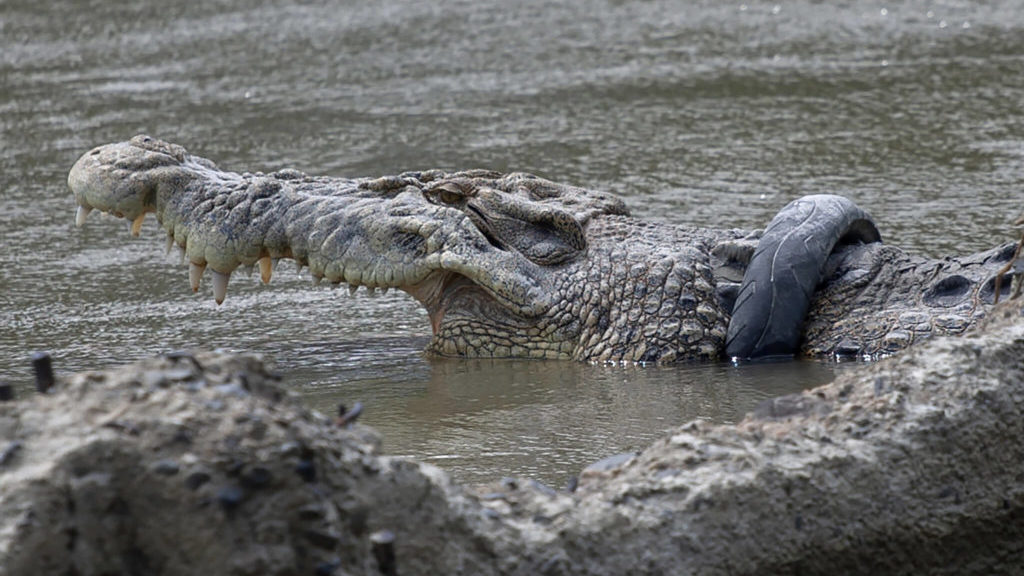The trace fossils include swim traces, made when the crocodiles were scraping the muddy bottoms of lakes and river channels with their claws.
While the Tumbler Ridge area has become well-known for its dinosaur tracks, there is something special about crocodiles.
In 2020, a crane company donated time and personnel to recover four large blocks containing some of the finest examples of these tracks and traces.
This was corroborated by our identification of a partial track, 75 centimetres long, which allowed for a similar length estimate of close to nine metres.
A crocodile of such prodigious size would have weighed around five tonnes, and would probably have been a top predator.
In North America, the oldest body fossil evidence of giant crocodiles is of Deinosuchus at about 82 million years, estimated to have been between eight to 12 metres long.
These findings follow our discovery of 112 million-year-old swim traces, made by much smaller crocodylians within the Tumbler Ridge UNESCO Global Geopark.
The co-existence of traces made by walking ankylosaurs and swimming crocodiles on a single surface was intriguing and unprecedented in the fossil record.
— by Guy Plint, Professor, Earth Sciences, Western University and Charles Helm, Research Associate, African Centre for Coastal Palaeoscience, Nelson Mandela University.
